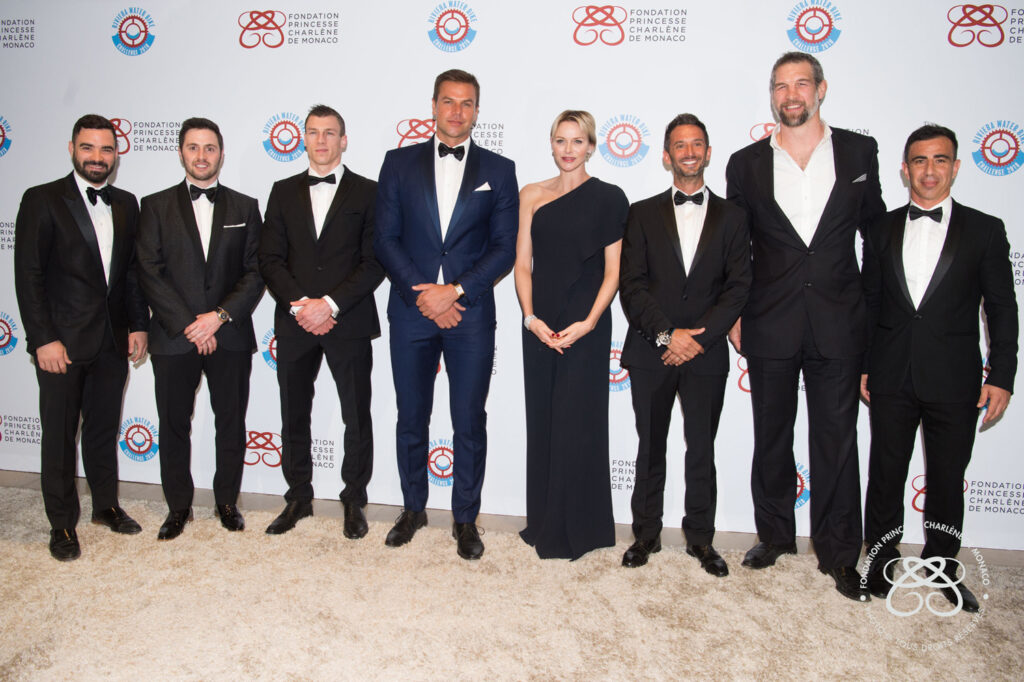The Princess Charlene of Monaco Foundation brings the fight against drowning to Canadian schools

The Princess Charlene of Monaco Foundation may be based in Monaco, but it fights against drowning on a global scale. In Canada, the foundation has expanded its programmes to run almost 100,000 hours-worth of swimming lessons for Quebec students.
The Princess Charlene of Monaco Foundation was created in 2012 to fight against drowning. A quick look at statistics leaves no doubt that raising awareness about the dangers of water is a matter of extreme urgency:
The WHO estimates that around 320,000 people drown every year
- This amounts to about 40 people drowning every hour
- Half the victims are under the age of 25
- Children below five are the most affected age group
- Drowning is amongst the top 5 causes of deaths in children between the ages of one and 14.
The foundation runs several programmes throughout the world, such as “Learn to Swim” and “Water Safety”, which teaches measures to prevent drowning. Since the foundation’s creation in December 2012, almost 730,000 people, mainly children, have benefited from these three programmes in 34 countries. “Too many children die every year because they do not know how to swim, when simply learning how to swim could save their lives,” explains Princess Charlene.

Teaching Canadian schoolchildren drowning prevention
A lot of children say that they can swim, but can they really? In Canada, drowning is the 2nd cause of death in young children. To change such statistics, the Princess Charlene of Monaco Foundation has partnered since 2013 with Quebec’s Lifesaving Society to run a programmed called “Swim to Survive”. The programme teaches both swimming and drowning prevention to Quebec’s school children. The classes put a particular focus on what to do in order to survive an unexpected fall into deep water.
The programme is mindful to reach children from underprivileged backgrounds: “The aim of the foundation has always been to prioritised children in primary schools with low socio-economic levels – so-called disadvantaged schools – in order to ensure that all pupils can learn to swim to survive,” explains former Olympic diver and foundation ambassador Sylvie Bernier.
Foundation ambassador Alexandre Bilodeau: “Sport has been the greatest school of life”
Double Olympic champion, skier Alexandre Bilodeau is known for his charitable heart. In 2010, a meeting with Princess Charlene allows him to actualise his wish to raise awareness about drowning. “I met Princess Charlene during the 2010 Vancouver Olympic Games. We had the chance to talk for several hours on subjects of mutual interest. Later, Princess Charlene was looking for like-minded ambassadors who would support her in her foundation’s efforts around the world. Princess Charlene remembered our meeting, contacted me again in 2012 and asked if I would be interested,” says the Olympic freestyle skiing champion.

“Swim to Survive” patron Sylvie Bernier: “It is my life’s project!”

For Sylvie Bernier, 1984 Olympic diving champion and spokesperson for Swim to Survive, her involvement in the programme was a no-brainer: “It is my life’s project! Swim to Survive can save the lives of thousands of young people from drowning and as honorary patron, I will do everything possible to contribute to the success and accessibility of this programme. As well as saving lives, this programme allows thousands of children to discover the pleasures of water in complete safety.”
A tragic family story has a lot to do with the athlete’s commitment: “July 24, 2002 will forever remain lodge in my mind and in my heart. That day, my 5-year-old nephew Raphaël drowned before my eyes during a family canoe trip on the Nouvelle River in Gaspésie. The book I wrote in 2018 The Day I Couldn’t Dive (Le jour où je n’ai pas pu plonger) tells of the guilt that came with not having dived to free my nephew who was trapped under the boat. Experts have confirmed that had I dived, I too would have drowned because like him, I would have been swallowed up by the vortex under the logjam. Water has been the best of times and the worst of times: I won the diving gold medal at the Los Angeles Olympics, but my nephew drowned in a river. How do you reconcile these two experiences?” she says.
“Swim to Survive” has now reached 33,000 Quebec school children for a total of 99,000 hours of swimming and drowning prevention lessons. And the programme’s future is bright: The Princess Charlene of Monaco Foundation and the Lifesaving Society aim to expand the “Swim to Survive” to other Canadian provinces.
READ MORE: Princess Charlene challenged to cycle 180 km in 24 hours… on water









